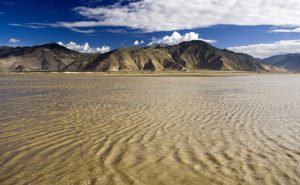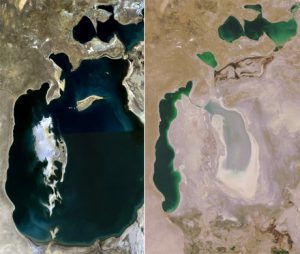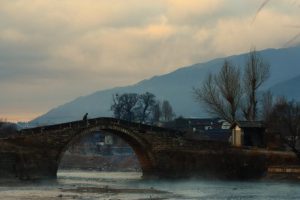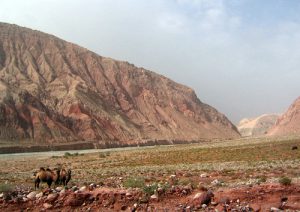Since a tsunami crippled a nuclear power plant on its Pacific coast, Japan’s north-east prefecture of Fukushima has become a byword for nuclear disaster as infamous as Chernobyl or Three Mile Island.
However, if people such as Katsuichi Kato have their way, the name Fukushima could in the future also gain a more positive power-industry association as a leader of renewable energy production in the world’s third-largest economy.
The head of an association aiming to revive the quiet hot spring resort of Tsuchiyu, Mr Kato is spearheading efforts to build what would be Japan’s first geothermal power plant inside a national park. And while hot spring owners are in Japan usually the fiercest opponents of geothermal energy, here they are its backers. Mr Kato is the managing director of the Tsuchiyu hot spring co-operative.
That makes Tsuchiyu a possible poster child for geothermal, an energy source Japan has largely cold-shouldered in recent years but which experts say has great potential. The same geological inheritance that makes the archipelago vulnerable to earthquakes and volcanoes also grants formidable reserves of hot subterranean water that can be tapped to drive electricity-generating turbines.
A widely cited estimate puts Japan’s possible geothermal generating capacity at 23 million kilowatts, trailing only the US and Indonesia. But installed capacity totals less than 550,000 kilowatts and no new geothermal plants have been built in more than a decade.
Tsuchiyu, which hopes to have its first generator up and running by 2014, has good reason to embrace geothermal. The resort, 16 kilometres from the prefectural capital, was suffering falling demand even before last year’s disaster. Now worries about contamination from the Fukushima Daiichi plant are keeping visitors away, even though radiation levels are far below levels considered remotely hazardous for short-term stays.
Mr Kato hopes the planned plant will be a long-term earner for the local hot spring association and other investors. The business case is helped by government subsidies for construction and a mandatory purchase price for electricity from small geothermal plants recently set at a generous 42 yen (US$0.53) per kilowatt hour.
It helps that Tsuchiyu is blessed by a plentiful supply of water from its existing wells. At 140 to150 degrees Celsius, the water is not hot enough for standard geothermal plants, but it is fine for modern “binary” plants that use a liquid with a lower boiling point than water to drive their turbines.
Playing the role of pioneer should also help fill Tsuchiyu’s hotels. “If we can do this, we should be able to attract visitors from all around Japan to come to study and learn how we use geothermal generation,” Mr Kato says.
The Tsuchiyu’s project will hardly resolve Japan’s energy problems. Its initial phase will have capacity of 500 kilowatts – enough to meet most of the resort’s own electricity needs but only a little more than one-thousandth of the power generated by the smallest of Fukushima Daiichi’s reactors.
Larger plants also remain controversial. Relaxation this year of a ban on vertical geothermal drilling in national parks has sparked excitement among would-be operators, but many in the hot spring sector say new plants threaten water flows.
Kasumi Yasukawa, an expert on geothermal resources at Japan’s National Institute of Advanced Industrial Science and Technology, says there is no evidence of such problems and that even if they occur they should be technically resolvable.
Yoshiyasu Sato, chairman of the Fukushima hot spring association, doubts such assurances. The tsunami and nuclear crisis gave Fukushima troubles enough without making geothermal a new threat to troubled bathing businesses, Mr Sato says. “The most important thing is not to destroy the status quo,” he adds.
Such worries are understandable. The supposedly impossible failure of Fukushima Daiichi was a potent reminder of the need for scepticism toward official promises.
Yet neither Fukushima nor Japan can afford to settle for the status quo. With nuclear power out of favour, there is an urgent need for other sources of electricity – and geothermal is much more stable than weather-dependent solar or wind. Fukushima, too, badly needs to boost business investment and tax receipts.
Officials in the prefecture will have to work hard to overcome opposition – finding ways to ensure hot spring operators stand to benefit from projects and shield them from any losses should their water sources suffer.
However, as the Tsuchiyu project shows, many in the hot spring business realise the troubles caused by the nuclear disaster have also created opportunities. As Mr Kato puts it: “In a pinch, there is a chance.”
Mure Dickie is the Financial Times’ Tokyo bureau chief
www.ft.com/home/uk Copyright © The Financial Times Limited 2012
This article is republished here as part of Nuclear Enery and Developement Programme, which is supported by the Heinrich-Boell Foundation.
Homepate Image by Si-take






